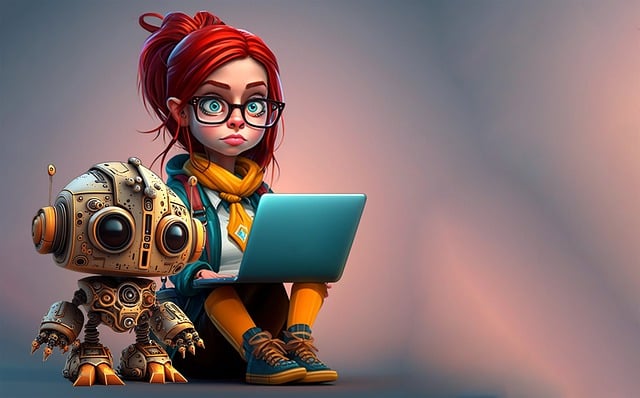We recently posted a quote on our Instagram feed that garnered a lot of a lot attention, and a lengthy discussion in the comments. It was written by a high school writing teacher to her students. It addressed plagiarism in the age of AI and said:
“Perhaps it’s not about plagiarism, nor is it about shortcuts, procrastinating, being fearful, or hating school. Sometimes it’s easier to copy-paste because it makes us sound smarter or we get the job done easily, but we cheat ourselves of our own ability to think and live. Plagiarism points to something bigger: a disbelief in the self. I want you to know that you are worth the originality and mistakes you will make. You need to know that your differences are what make you unique. That these nuances are to be celebrated. I want you to learn to think for yourselves. And even if it is inevitable that machines will replace us in certain aspects of our lives- don’t let the machine take over you. Also, you are worth the hard work, confusion, mistakes, and successes you are going to go through”.
Why it Resonates
The different reactions we received to this post seem to mirror the uncertainty of the time we are living in. Since the launch of Chat GPT at the end of last year, concerns around students using it to cheat have been swirling in the education community. And for good reason. Essays written by Chat GPT cannot be detected by traditional plagiarism checkers because they are originals, not copies of other work. Likewise, new tools designed to detect AI-written work are unreliable and quickly become obsolete as generative AI improves.
The appeal of the technology for students is obvious. Chat GPT can complete assignments with alarming accuracy and speed. Many of us tend to assume that any instance of cheating is simply the result of laziness or apathy, but both teachers and students left comments about why that misses the larger issue. They noted that students are often made to feel like grades are all that matter. And when getting into college or qualifying for a scholarship are on the line, the thought of risking a bad grade for the sake of personal growth feels like too big a gamble to make.
This speaks to a much larger issue within education than Chat GPT, but it can hopefully help inform new policies for the age of AI. These policies must acknowledge that uniquely human skills and qualities are more important than ever. In a world where AI can write coherently and pass traditional tests, human abilities to think critically and act with empathy are all the more valuable.
At the same time, students need to learn to work with new technologies. While many schools and districts have instituted bans on Chat GPT, this strategy will likely be unsustainable in the long run and will put students at a disadvantage as AI proliferates workplaces in the future.
Developing Policies for AI in the Classroom
There’s a lot to consider when developing a policy about the use of AI in your classroom. Here are some helpful guidelines and ideas you may want to reflect on:
Try to avoid policies that could encourage students to focus more on finding ways around the rules than actually completing the assignment. Bans have loopholes. Schools may be able to block certain websites on school-owned devices and wifi networks, but students will still be able to find access outside of school and the number of different generative AI websites is continually growing. Likewise, using AI detectors like GPT Zero may just send students on a scavenger hunt for a chatbot that can evade your chosen detection tool. And your grading time may become a task of running every essay through multiple detections tools.
Talking to students about AI at school is essential. If students are using AI outside of the classroom, then they should be learning about its benefits and downsides inside the classroom. Students with a thorough understanding of the technology will be more likely to use it responsibly.
Develop policies collaboratively and communicate them clearly. Since this technology is still new, there is no single definition of what constitutes improper use. So, individual schools and teachers are making those decisions. We suggest involving all the relevant stakeholders in that decision (students, parents, administrators). Including student voices in the policy making will give them agency and increase the likelihood that they’ll follow the established rules. When developing an AI use policy, here are some guiding questions for all involved parties:
- What should students be allowed to use AI’s help with (brainstorming, making an outline, editing, feedback, etc)?
- What shouldn’t students be allowed to use AI’s help with?
- Do students have to cite AI as a source? If so, when and how? (check out what the IB says here)
- What is the consequence for using AI unfairly?
Getting Creative
Avoiding cheating in the age of AI will also require new teaching strategies. This may include changing when students are completing assignments by implementing a flipped classroom model. It may also mean changing the types of assignments and activities being used to ones that can’t be completed by AI. These include simulation or role-play activities, debates, case-studies, video or podcast projects, fact-checking and other open-ended, discussion based, collaborative assignments that require higher-order reasoning skills. These activities not only help avoid the issue of cheating with AI, but teach and assess the types of skills that students need in an AI-driven world.
Why This Conversation Matters
The concerns around plagiarism today speak to the many dimensions of how AI will impact education. We are concerned that our students won’t learn the material we are teaching. We are worried that AI may replace our students in their desired careers. We are wondering if the knowledge and skills we’ve been teaching are no longer adequate for the world they are living in. The next several months and years will undoubtedly bring about profound changes in how we learn, work, and live. And teachers are now learning alongside their students as they navigate these changes. In the end, we together get to decide what academic integrity looks like in a world with AI. As we continue having these conversations, we must remind our students that they are human, that a chat bot is no replacement for their own thinking, and that they are “worth the hard work, confusion, mistakes, and successes [they] are going to go through”.





